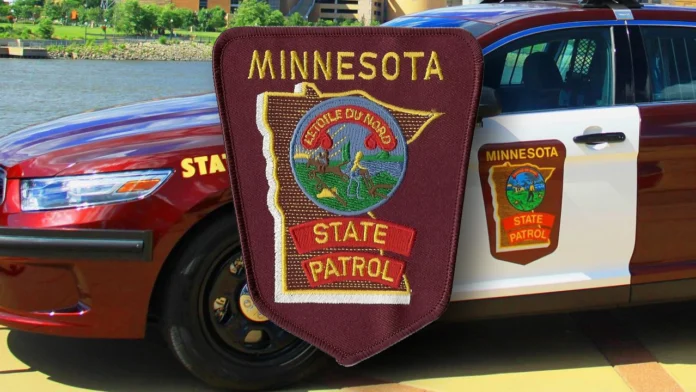The economies of Cook and Lake Counties depend heavily on commercial vehicles to transport everything from fresh-cut logs to fresh-caught fish and everything in between. Minnesota Highway 61, which connects the border with Canada to Duluth and markets beyond, is the southern boundary of both counties.
From time to time, you may notice a significant increase in State Patrol vehicles along Highway 61, with officers inspecting commercial trucks and trailers. Known as saturation events, several officers and commercial vehicle inspectors will be in the area at one time, sometimes over two or three days. These dedicated law enforcement officers and inspectors perform random vehicle inspections, focusing on driver licensing and compliance, load securement, and the state of the equipment.
Lieutenant Dana Miletich oversees Commercial Vehicle Station 4750, which includes Cook and Lake counties along with Carlton, St. Louis, Pine, Itasca, and Koochiching counties. It is one of seven Commercial Vehicle Stations in the state.
“Our focus is primarily on education,” Lt. Miletich said.
Properly maintaining commercial vehicles is essential for the safety of the traveling public. Comprehensive federal and state regulations govern everything from licensing drivers to seat belt usage, lighting, and brakes.
Lt. Miletich said that there are three levels of roadside inspections they might perform after safely removing a vehicle from the road.
Level 3 is a driver-only inspection, which ensures that the driver is licensed to drive the vehicle they’re driving and that their paperwork is accurate. On the day of this interview, Lt Miletich said that he inspected a driver with a Class D driver’s license–appropriate for the pickup truck he was driving, but when combined with the trailer he was pulling, the gross weight required a Class A license.
Level 2 combines the driver inspection with a walkaround inspection to visually appraise tires, check running lights, brake lights, and turn signals, and inspect trailer air lines and electric connections.
Level 1 inspections include the driver portion, the walkaround, and getting underneath the vehicle to inspect brakes, axles, and frames. Officers and inspectors have portable scales to ensure the vehicle’s weight does not exceed legal limits and is appropriately distributed in/on the vehicle.
“In my personal experience,” Lt Miletich said, “the three most common violations I find are bad brakes, worn tires, and hours of service (HOS) violations.”
The Federal Motor Carrier Safety Administration (FMCSA) has strict regulations governing how long truck drivers can operate a commercial vehicle. The fundamental rules are: Drivers cannot drive for more than 11 hours after starting their workday. A driver can be on duty (moving or not) for 14 hours after starting their workday. Drivers must take a 30-minute break after driving for eight hours. Drivers must have ten consecutive hours off duty between workdays. Drivers cannot drive more than 60 hours in 7 consecutive days or 70 hours in 8 consecutive days.
The potential danger of poorly maintained vehicles on our highways is exponentially higher with commercial trucks than your average sedan. The approximate stopping distance for a well-maintained 80,000-pound truck and semi-trailer increases by almost 200 feet when traveling at 65 miles per hour versus 55 miles per hour. Studies show that the distance increases to approximately 525 feet when reactionary times are included.
Lt. Miletich said, “I urge people to show extra care when driving near commercial vehicles.”
In addition to random inspections on the road, the state’s Mandatory Inspection Program (MIP) requires that commercial vehicles be inspected annually by a certified inspector, and an annual inspection decal is displayed. For purposes of the yearly inspection, a commercial motor vehicle is a vehicle or combination of vehicles having a gross vehicle weight greater than 26,000 pounds; a bus; or a vehicle, regardless of size, that transports a quantity of hazardous materials requiring the vehicle to display placards; ora self-propelled special mobile equipment mounted on a commercial motor vehicle chassis with a gross vehicle weight more than 26,000 pounds.
Random inspections help identify and address safety issues that might be missed during annual checks or that have occurred after the MIP. They also build awareness among professional drivers, deter unsafe driving practices, and promote overall road safety.
Slow down when you see the Highway Patrol officers and vehicle inspectors along our roadways, give them a wide berth, and thank them if you get a chance.
They are saving lives.



